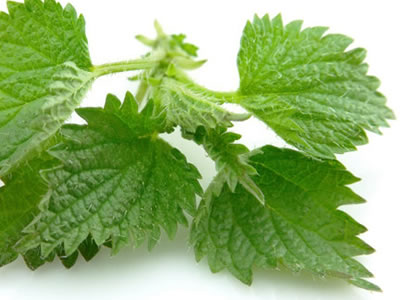Nettle has a long history of use as a home herbal remedy. Nettle is used to treat arthritic joint pain, hair loss, prostate enlargement, urinary tract infections, and other disorders.
What is Nettle
Nettle (Stinging nettle, Urtica dioica) is a perennial herb of the genus Urtica in the family Urticaceae. The plant is about 100-150 cm tall with stinging hairs. The stinging hairs are toxic and can cause skin rashes and burning sensations. Nettle is native to Europe and Asia. Nettle fibers have long been used in Europe for clothing, and still used today in the textile industry.
Nettle contains chlorophyll, beta-carotene, vitamin A, C and E, tannins, iron, calcium, silicon, phosphates, potassium and other minerals. Nettle has astringent, expectorant, tonic, anti-inflammatory, and diuretic properties. The leaves and roots of nettle have been used for thousands of years as herbal medicine in treating rheumatic pains, urinary tract diseases and other conditions.
How to use nettle
1. Nettle Soup
Nettle leaves can be cooked with chicken, pork, and other foods to make a soup and dish. Here is how to make a nettle chicken soup:
– Chicken (or pork) 1 pound (cut into 1 inch pieces)
– Celery 1 stalk (cut into 1/2 inch pieces)
– Carrot 1 (cut into 1/2 inch pieces)
– Onion 1/4
– Fresh nettle leaves 1/2 cup
– Garlic 3 cloves (chopped)
– Black pepper powder 1/4 teaspoon
– Salt 1 teaspoon (or to taste)
– Water 3 cups
– Put all ingredients with water into a pot
– Bring to a boil and simmer for 1-2 hours
– Note, you may add butter, ginger, parsley, rosemary and/or thyme to the soup
2. Nettle Tea
Fresh or dried leaves of nettle can be used to make a tea. Nettle tea is beneficial to urinary tract infections, prostate enlargement and arthritic joint pains. Here is how to make a nettle tea:
– Dried nettle leaves 10g (fresh leaves 30g)
– Boiling water 1 cup
– Pour the boiling water over the leaves and cover it
– Steep for 10 minutes
– Or you can boil the leaves in a cup of water for 1-3 minutes
– Strain
– Drink it, 2-3 times a day to help treat urinary tract and prostate problems, and arthritic conditions
– You can also use the decoction to wash the affected area to relieve arthritic joint pains
3. Nettle Tincture
The roots or leaves of nettle can be used to make a herbal tincture for treating hair loss and arthritic joint pains. Here is how to make a nettle tincture:
– Dried nettle roots or leaves 100g (fresh herb 300g)
– Alcohol 35%-85% 500ml
– Soak the herb in the alcohol for one month
– Rub the tincture to the head for revitalizing the hair
– Rub the tincture to the affected area to relieve arthritic pains
– Drink 10-20ml with 1/2 cup of water, twice a day
4. Nettle Plaster
Nettle leaves can be used to make a poultice for treating arthritic joint pains. Here is how to make a nettle plaster:
– Fresh nettle leaves 1 handful
– Wash, chop and smash it to make a plaster
– Or mix dried powder of leaves or roots 30g with some water to make a plaster
– Apply the poultice to the affected area
– Change it once a day
Nettle has been used for treating inflammation, pain, urinary tract disease, prostate hypertrophy, prostate cancer, diabetes mellitus, kidney disease, arthritis, rheumatic disease, osteoarthritis, rheumatoid arthritis, diarrhea, constipation, gastrointestinal disease, hypertension, headache, nausea, common cold, asthma, respiratory tract disease, allergic rhinitis, skin disease, bleeding, and many other diseases. But more studies and verification are needed.
Warnings and Precautions
– If you are new to nettles, you should try it starting with a small amount.
– When harvesting nettles, be sure to wear long clothing and gloves because the sting can cause skin rashes and burning sensations.
– Overdose can cause vomiting and abdominal pain. Drinking ginger brown sugar tea can relieve the symptoms caused by overdose use.
– Please consult your doctor before using nettle as a remedy.
References
- Phytotherapy for benign prostatic hyperplasia (BPH): Double-blind study with extract of root of urtica (ERU), Dathe G, Schmid H. 1987, Urologe B 27: 223-226.
- Evaluation of antinociceptive, antinflammatory activities and phytochemical analysis of aerial parts of Urtica urens L., Marrassini, C. Acevedo, C. Mino, J. Ferraro, G. Gorzalczany, S. 2010, Phytother Res 24 (12): 1807–1812.
- An alkali-producing mechanism in macerated leaves, Holden, Margaret, 1948, Biochemical Journal 42 (3): 332–336.



